Many castles take advantage of natural features of the local landscape in which they are built in order to increase their defensive power – some are built on lakes and islands, and others use rivers to act as moats. However, perhaps the most spectacular natural feature that castles are built on is cliffsides and clifftops.
The defensive advantage afforded by such positioning is clear: clifftop castles are incredibly difficult to approach, and besiegers often struggled to use siege artillery against such lofty fortifications due to their very great height. Below are some of the strongest, most famous, and most breathtakingly beautiful cliffside castles in the world.
Disclaimer: This post contains affiliate links. This means that should you click on certain links and then subsequently purchase a product, I will receive a small commission.
18 Cliffside Castles to Visit
1. Swallow’s Nest
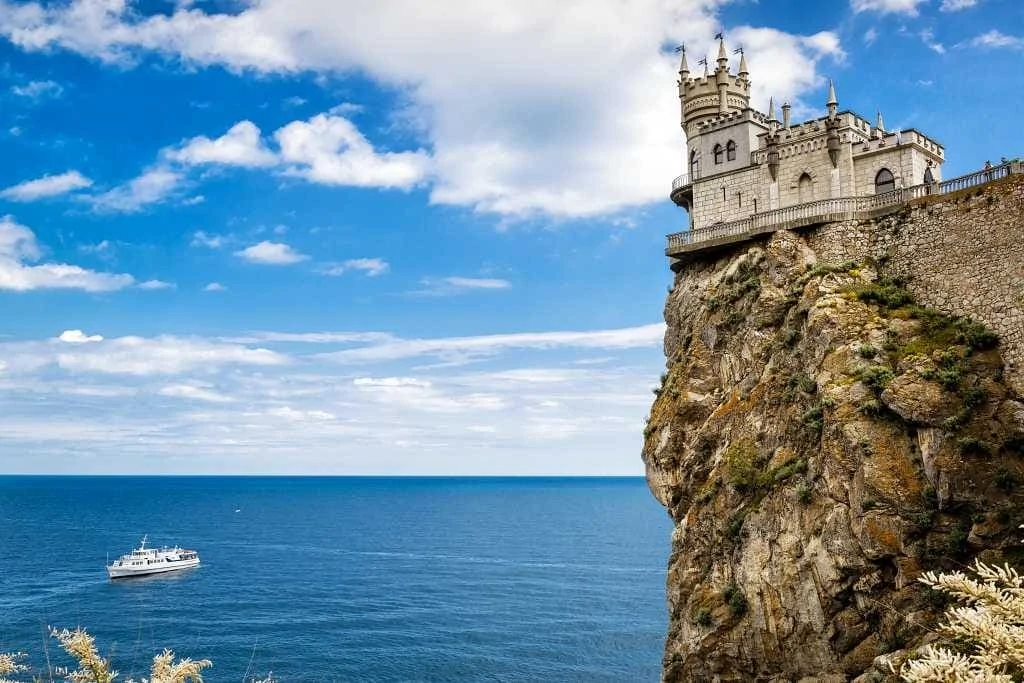
The Swallow’s Nest is a small decorative cliffside castle in the small town of Gaspra, near Yalta in the Crimean Peninsula. Built between 1911 and 1912 for the Baltic-German businessman Baron von Steingel, the Swallow’s Nest is Neo-Gothic in style with crenelated battlements, a round tower, and tiny turrets complete with conical spired roofs.
Measuring only 20 meters by 10 meters, the castle is very small – inside, it features two bedrooms within the tower, a foyer, and a guest room, all decorated with painted stucco. In 1927 a serious earthquake damaged the building and the 40-meter-high Aurora Cliff it stands on.
Restoration work began in 1968, and by 1975 both the castle and the cliff itself had been strengthened, allowing a restaurant to open there (which remains open to this day).
2. Dunnottar Castle
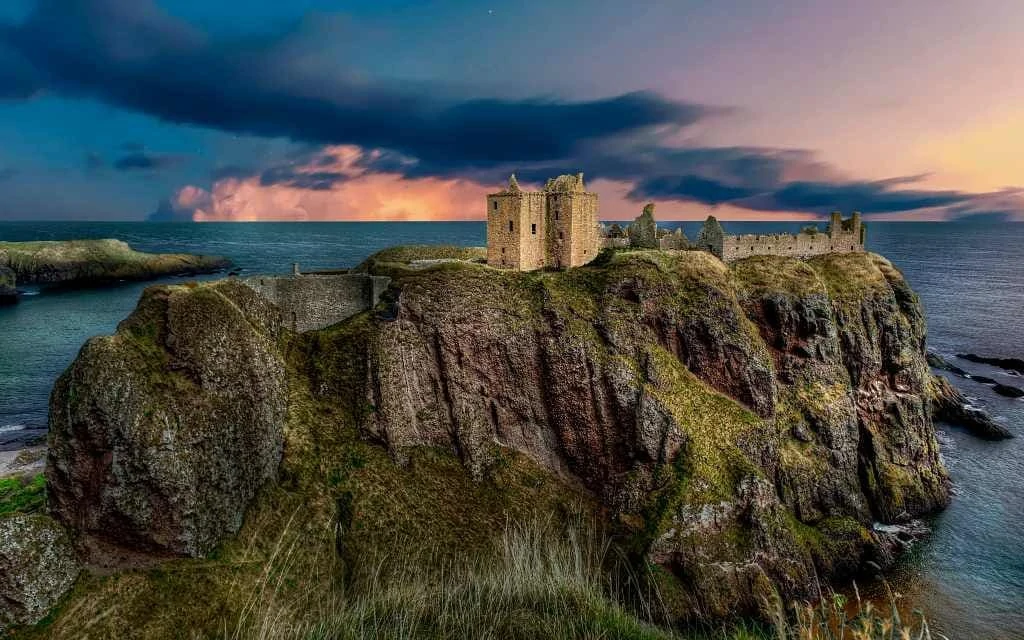
Situated on the northeastern coast of Scotland, two miles south of Stonehaven, Dunnottar is a medieval castle ruin on a rocky headland jutting out into the North Sea. Saint Ninian was said to have founded a chapel there in the 5th century, and the site may have also been fortified in the early medieval period.
In the 15th century, a tower house was constructed, and in the 16th century, a large palace built around a quadrangle was added, creating a luxurious residence atop the cliffs.
The castle on a cliff was where the Scottish crown jewels, the ‘Honours of Scotland’, were hidden from Oliver Cromwell’s army in the 17th century. During the Jacobite rebellions of the late 17th and early 18th centuries, Dunnottar was a crucial strategic site.
3. Neuschwanstein Castle
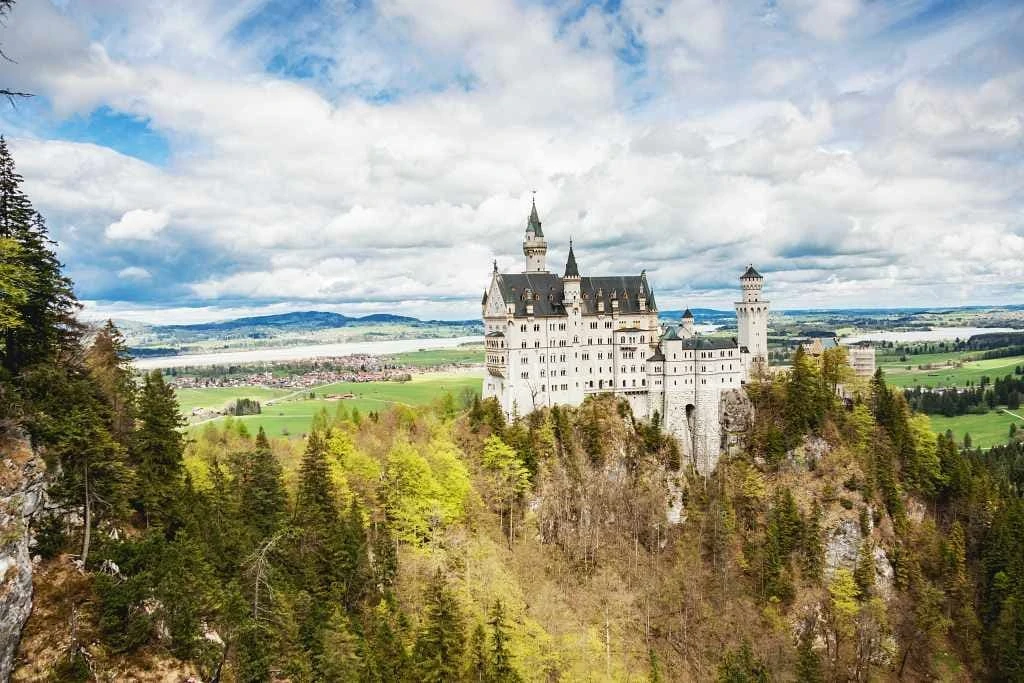
Neuschwanstein Castle is an opulent 19th-century palace that stands on a high rocky hill above the village of Hohenschwangau in Bavaria, Germany. Constructed for King Ludwig II of Bavaria, Neuschwanstein was built in style known as ‘castle romanticism’, partially inspired by Ludwig’s love of Richard Wagner’s operas.
The cliffside castle structure mixes Romanesque shapes and semi-circular arches, the tall, thin towers of the Gothic style, and the majesty of Byzantine art. Ludwig was inspired by his love for the operas of Richard Wagner, building the palace with his personal fortune rather than state funds. The king lived in the castle until his death in 1886, after which the site was opened to visitors as a tourist attraction.
4. Dunluce Castle
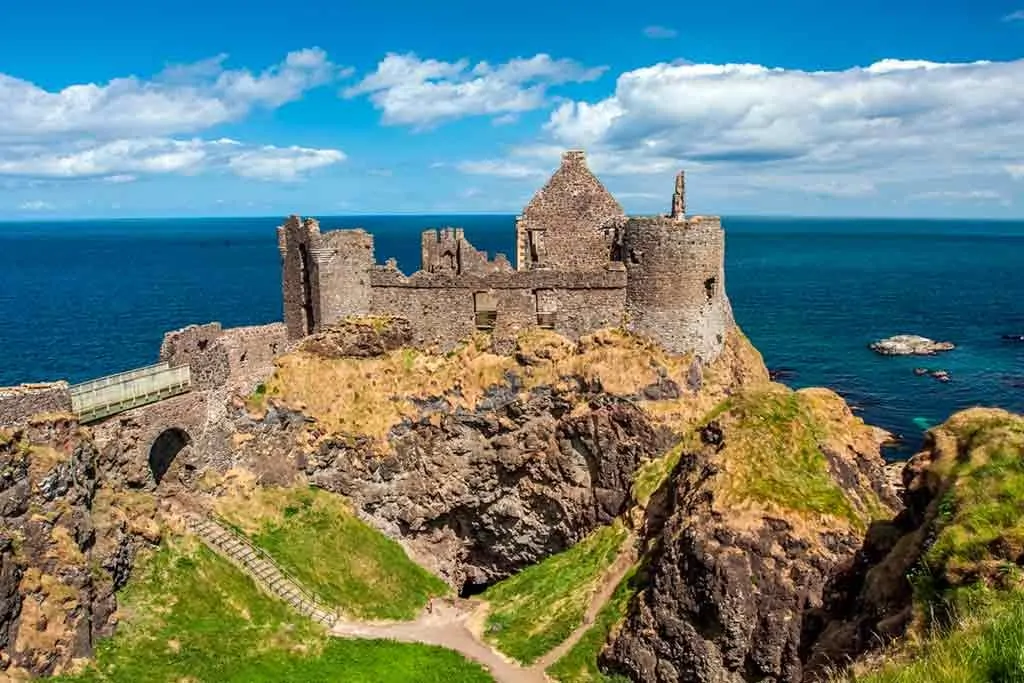
Originally constructed during the 13th century, Dunluce is a ruined cliffside castle that was the seat of Clan McDonnell. The site was home to an early Irish fort, and its remote location attracted early Christians and Vikings to it – Dunluce stands on a basalt outcrop in County Antrim.
Surrounded by steep cliffs, the castle has incredibly strong natural defenses and can only be reached by a narrow bridge connecting it to the mainland. The earliest surviving features of the castle are two squat drum towers, around nine meters wide, which are located on the eastern side of the fortification.
5. Aragonese Castle
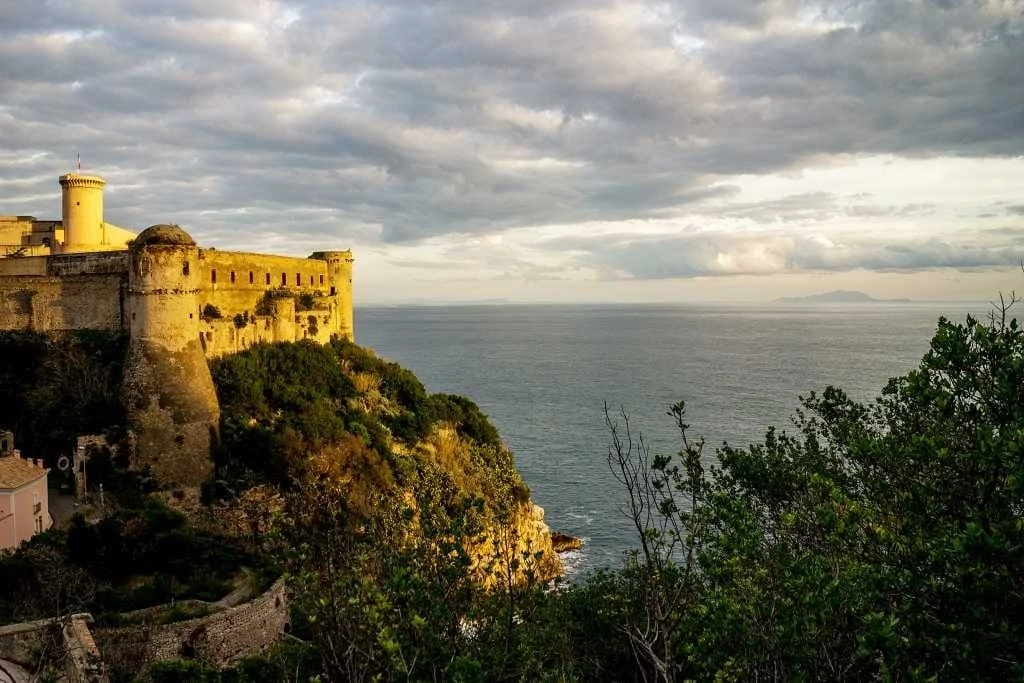
Built on a rocky volcanic islet next to the Island of Ischia, at the northern end of the Bay of Naples in Italy, Aragonese Castle is a medieval fortification built in 1441 by King Alfonso V of Aragon.
Originally inhabited by Hiero of Syracuse in 474 BC, who built two towers on the islet, the site was later taken by the Parthenopeans and then the Romans in 326 BC.
By 1700 the islet was home to 2000 families, a convent of the Order of Saint Clare, an abbey of Greek monks, and thirteen churches. During the Napoleonic wars, the cliffside castle was besieged in 1809 by the British, shelling its French garrison into submission.
6. Lichtenstein Castle
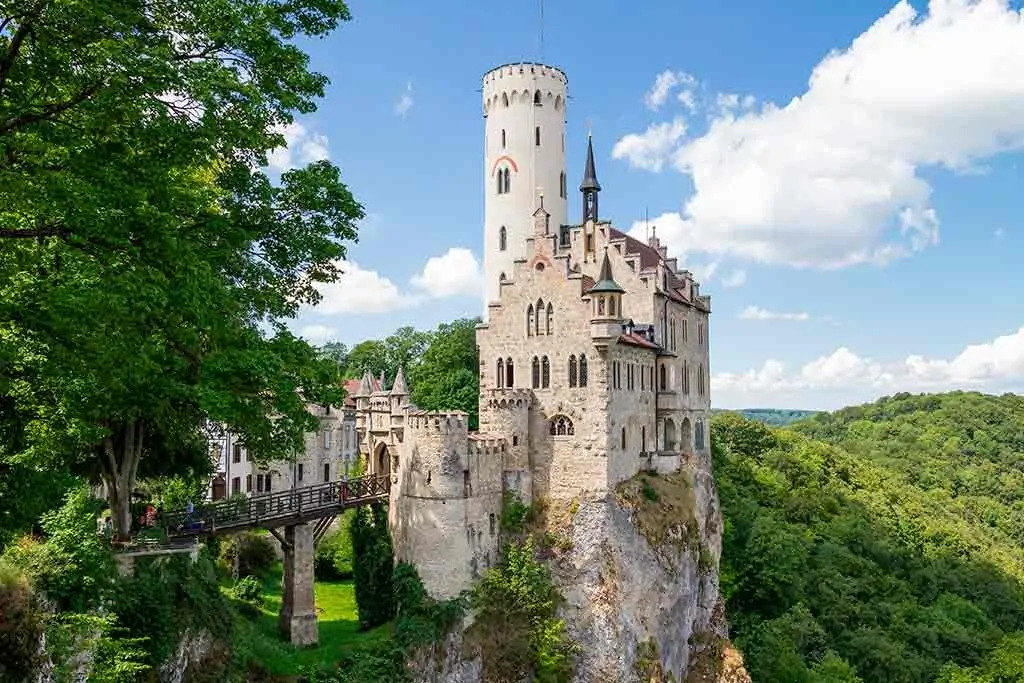
Located on a rocky escarpment 250 meters above the Echaz river in the Swabian Jura (also known as the Swabian Alps) in the south of Germany, Lichtenstein is a 19th-century Gothic Revival style castle.
Lichtenstein was built between 1840-1842, only 500 meters from its medieval predecessor, Burg Alt-Lichtenstein, a fortification that was ruined in the 14th century during the Lords of Lichtenstein’s many conflicts with the Free Imperial City of Reutlingen.
By the late 16th century, Lichtenstein castle had fallen into disrepair. It was in the 19th century that the castle on a cliff was built anew, heavily inspired by the romantic historical novel Lichtenstein of 1828. The three-story-tall castle later had a barbican, outer bailey, courtyard, and perimeter wall added.
7. Hohenwerfen Castle
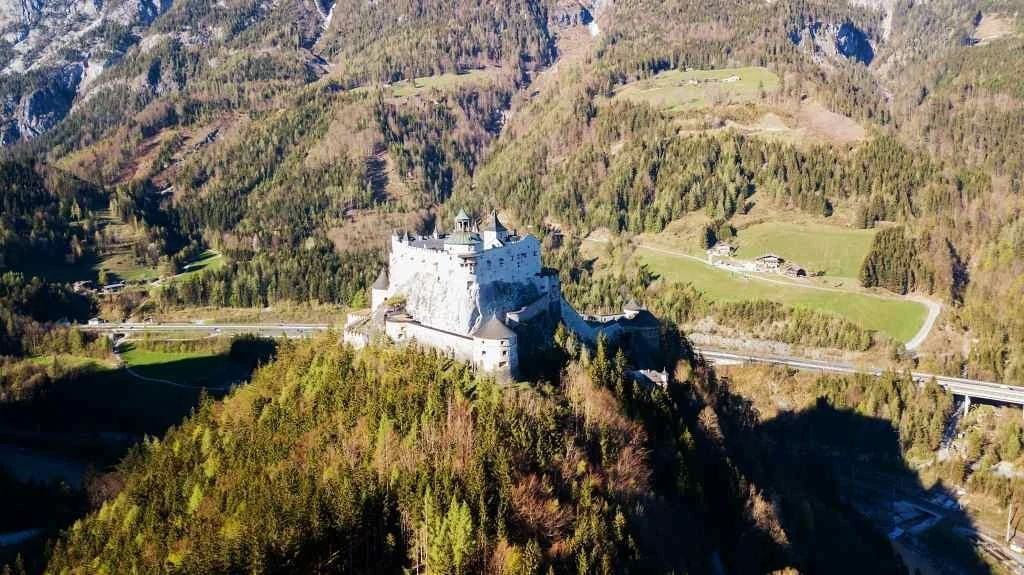
Built on a spectacular 623-meter-high precipice over the Austrian village of Werfen, this medieval castle is situated 25 miles south of Salzburg in the Salzach valley.
Initially, the cliffside castle was constructed by Archbishop Gebhard of Salzburg in the 1070s – for centuries, the prince-archbishops who ruled Salzburg held Hohenwerfen, using it both as a military base and as a hunting lodge.
The castle was reinforced in the 12th century and during the German Peasants’ war of 1525-6. Throughout its history, it also functioned as a prison before being repurposed during the Second World War, when it was used as an educational facility. After the war, it was used as a police training facility and is now open to visitors as a museum.
8. Alcazar of Segovia
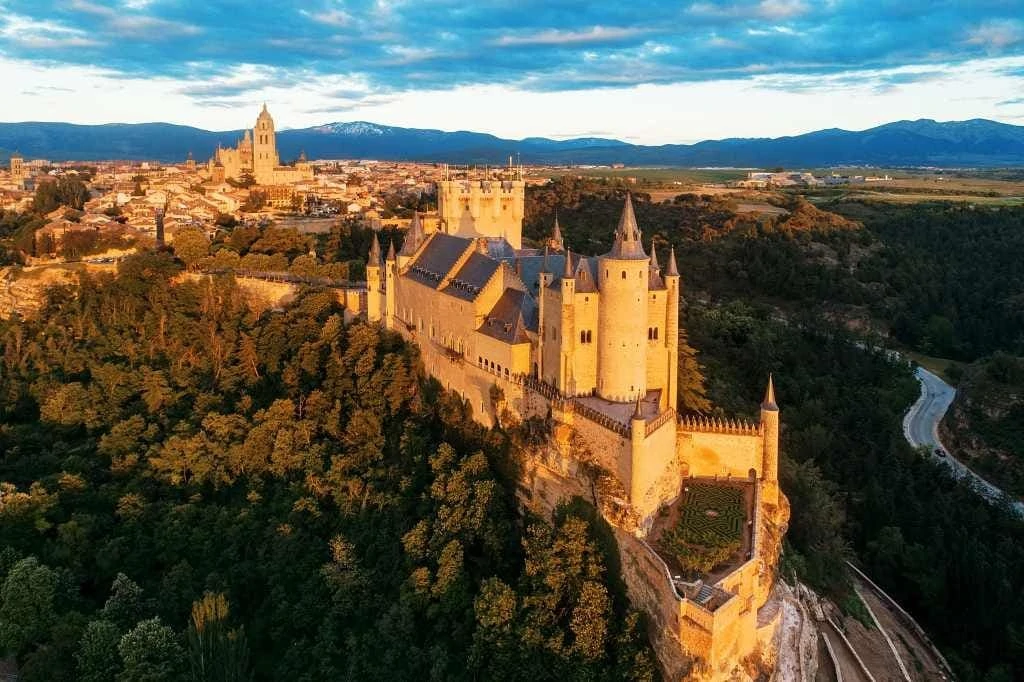
Famous for its picturesque appearance and distinctive shape (like the bow of a ship), the Alcazar of Segovia is a medieval castle built on a rocky outcrop at the confluence of two rivers in the city of Segovia, Spain.
The site was originally home to a Roman fort which was later replaced by a wooden fort belonging to the Berber Almoravid dynasty. The structure that stands there today was founded by King Alfonso VIII of Castile and quickly became one of the favored residences of the monarchs of Castile.
During the 16th century, slate spires were added to the cliffside castle by King Philip II, to bring the structure in line with European fashions. Since its construction, the castle has served as a prison, an artillery college, and a military academy – today it is a museum and the home of military archives.
9. Boccale Castle
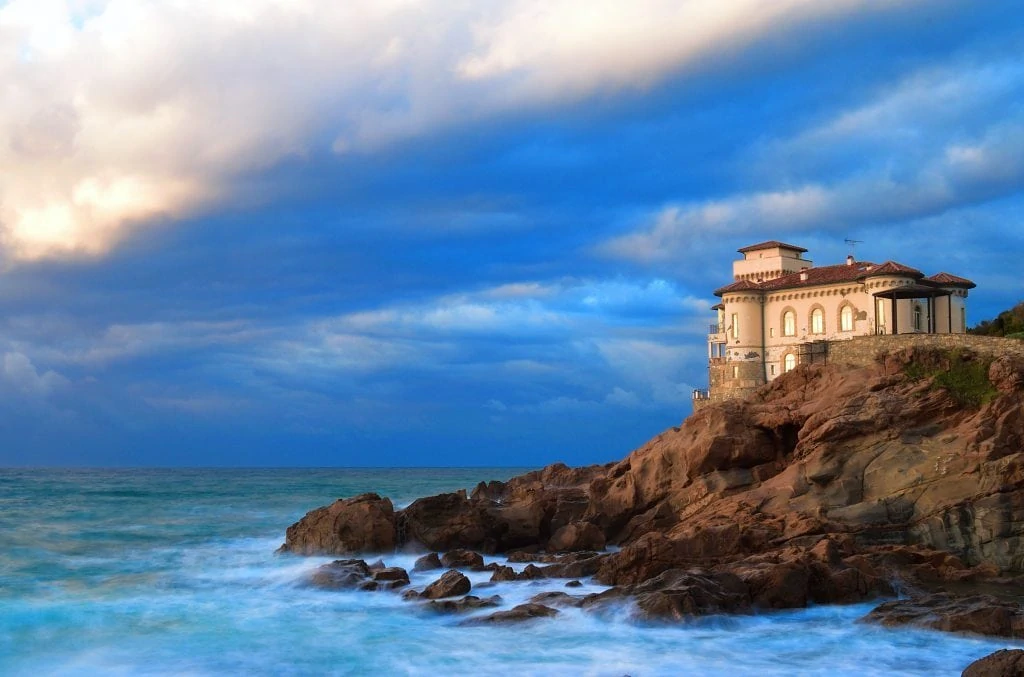
Initially constructed in the 16th century as a lookout tower by the powerful Medici family, Boccale Castle was later renovated and rebuilt as a neo-medieval mansion in the 18th century.
The castle perches atop a steep rocky cliff on a stretch of the Etruscan coast known as the Cala dei Pirati, the ‘den of pirates’. This name implies the function of Boccale: like many of the fortifications dotting this rugged coastline, it was intended to repel raids by pirates.
Today the building is occupied by several private residential apartments and is unfortunately not open to the public.
10. San Marino Castle
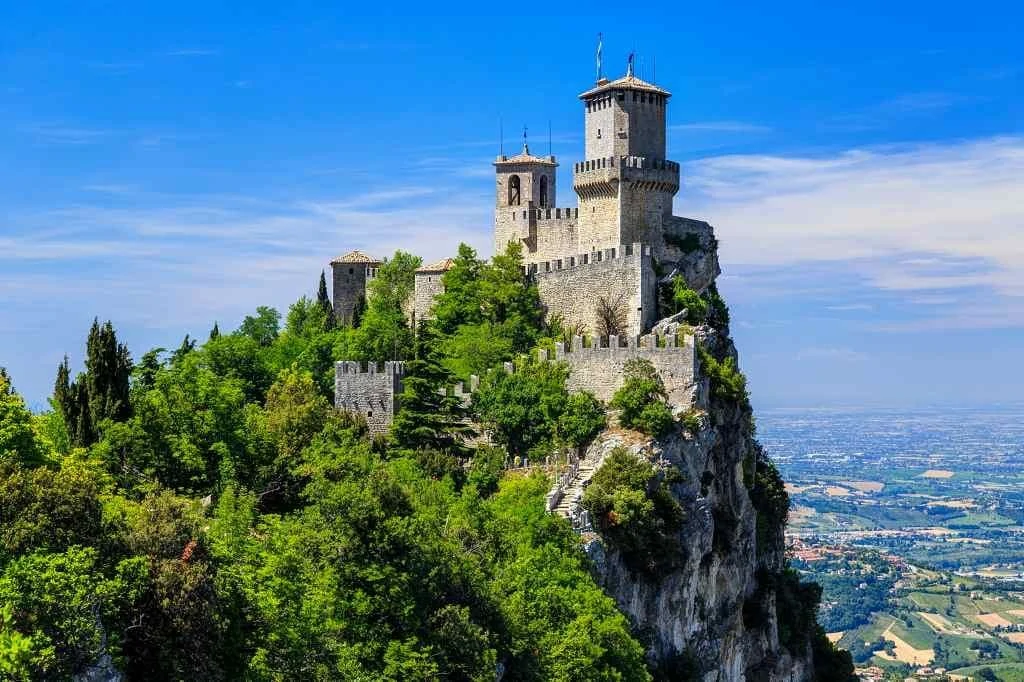
Sitting atop the three peaks of Mount Titano in the capital of San Marino (also named San Marino), these three towers are medieval fortifications built to defend San Marino and oversee the surrounding countryside. Guaita, the oldest and most famous of the three cliffside castles with its square towers and crenelated battlements, was constructed in the 11th century.
It served as a prison and reached its current form following and 15th-century rebuilding. The Cesta tower stands atop the tallest of Mount Titano’s peaks and was built in the 13th century on top of an older Roman fort – today, the tower is home to a museum and contains over 1,500 weapons.
The Montale tower is located on the lowest peak of the mountain and, unlike the other towers, is not open to the public. Built in the 14th century, it was likely constructed to combat the rising power of the regional House of Malatesta.
11. Predjama Castle
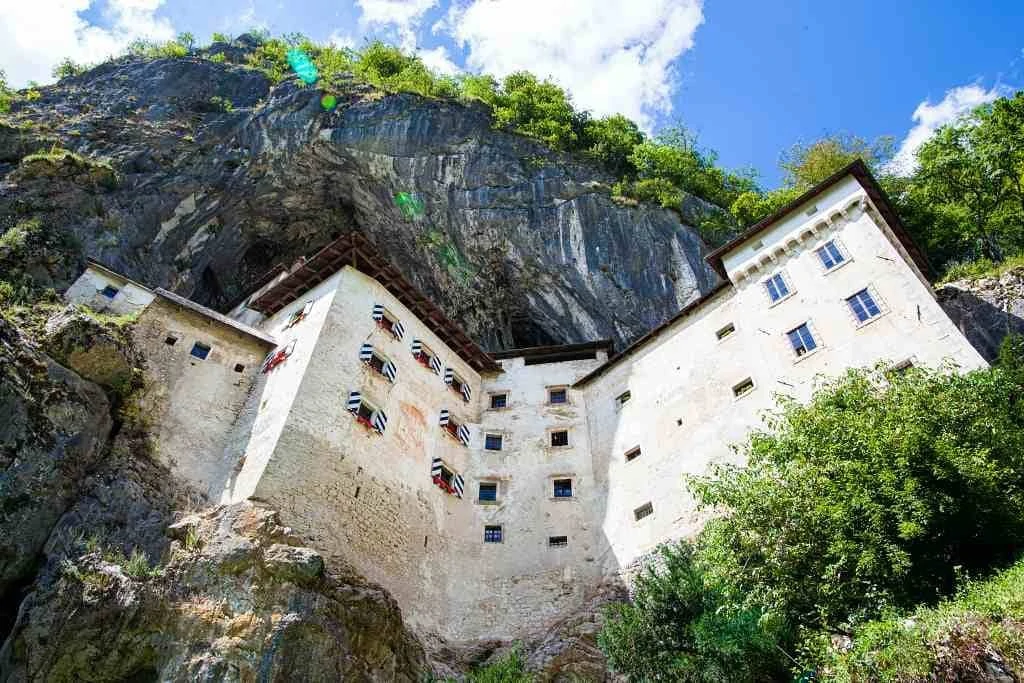
Predjama is a cliffside castle built in the mouth of a cave in the region of Inner Carniola, Southern Slovenia. The Patriarch of Aquileia ordered the construction of the first castle on the site in 1274 in the Gothic style – the fortification was placed atop a rocky cliff in a cave entrance to give it excellent natural defenses.
The 15th-century lord of Predjama, Erasmus of Lueg, gained a legendary reputation as a robber baron. His murder of Marshal Pappenheim, a commander in the Imperial army, brought down the wrath of Holy Roman Emperor Frederick III, whose forces besieged and eventually destroyed the castle at Predjama.
The castle was rebuilt but destroyed again by an earthquake in 1511 before being built for a third and final time in Renaissance style in 1570.
You might be interested in the following:
From Ljubljana: Postojna Cave & Predjama Castle Tour
From Trieste: Postojna Cave & Predjama Castle
12. Chepstow Castle
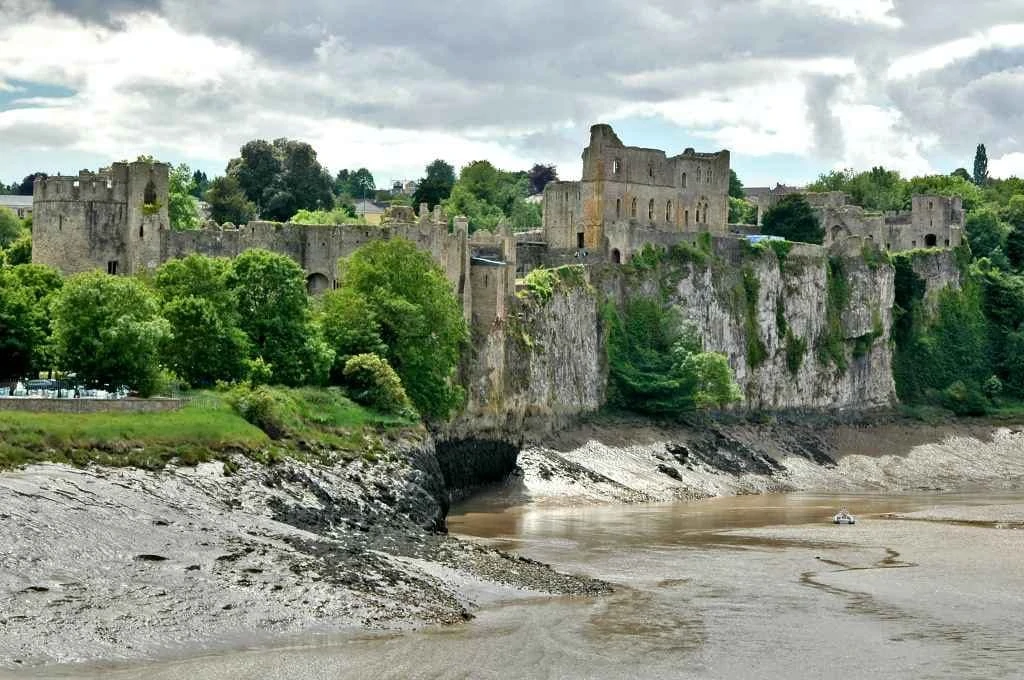
Founded in 1067, Chepstow is an imposing castle on a cliff that overlooked an important crossing of the River Wye, as well as the main road into south Wales. Positioned in Monmouthshire, the castle was built by William the Conqueror as part of his efforts to control his new territory following his coronation as King of England in December 1066.
The impressive stone ‘great tower’, typical of the Norman castle building, was completed in 1090 with the intention of intimidating the Welsh kings (who had the potential to threaten the English crown).
Many baileys and towers have been subsequently added to Chepstow, as the site maintained its strategic importance as a gateway into south Wales throughout the medieval period.
13. Penafiel Castle

Located in Peñafiel, Valladolid Province, Spain, Peñafiel is a castle built on a cliff rising sharply out of the large plain through which the River Duero flows. The cliff on which the castle stands is very narrow, and as a result, the shape of the castle is extremely thin and elongated – around 150 meters long and only 10 meters wide.
The site has been occupied since the 9th and 10th centuries when it was held by both Christians and Moors seeking to control the River Duero. The castle itself takes the form of a curtain wall surrounding the clifftop, punctuated by small towers, as well as a large 20-meter-tall keep in the center.
14. Venus Castle

Standing in the historic city of Erice in western Sicily, Venus Castle (known as Castello di Venere) is a cliffside castle built by the Normans in the 12th century.
The fortification gained the name ‘Venus’ because it was built on the foundations of an ancient temple dedicated to Venus Ericina – supposedly, stone from the temple itself was used in the construction of the castle.
The crenelated walls and square Norman towers of the castle perch high on the cliffs and offer excellent views of the surrounding countryside.
15. Culzean Castle

Built between 1777 and 1792, Culzean is a clifftop castle that overlooks the Firth of Clyde on the coast of Ayrshire in the west of Scotland. The castle was the seat of Clan Kennedy and was constructed by the 10th Earl of Cassilis.
Culzean is an L-shaped structure with a large drum tower (a tower wider than it is tall) and a lavishly decorated interior. In 1945 the Kennedys gifted the castle to the National Trust for Scotland on the condition that the top apartment of Culzean was given to Dwight D. Eisenhower in recognition of his role in winning victory for the Allies in World War Two. He visited the castle four times, including once while he was U.S. President.
16. Schonbuhel Castle
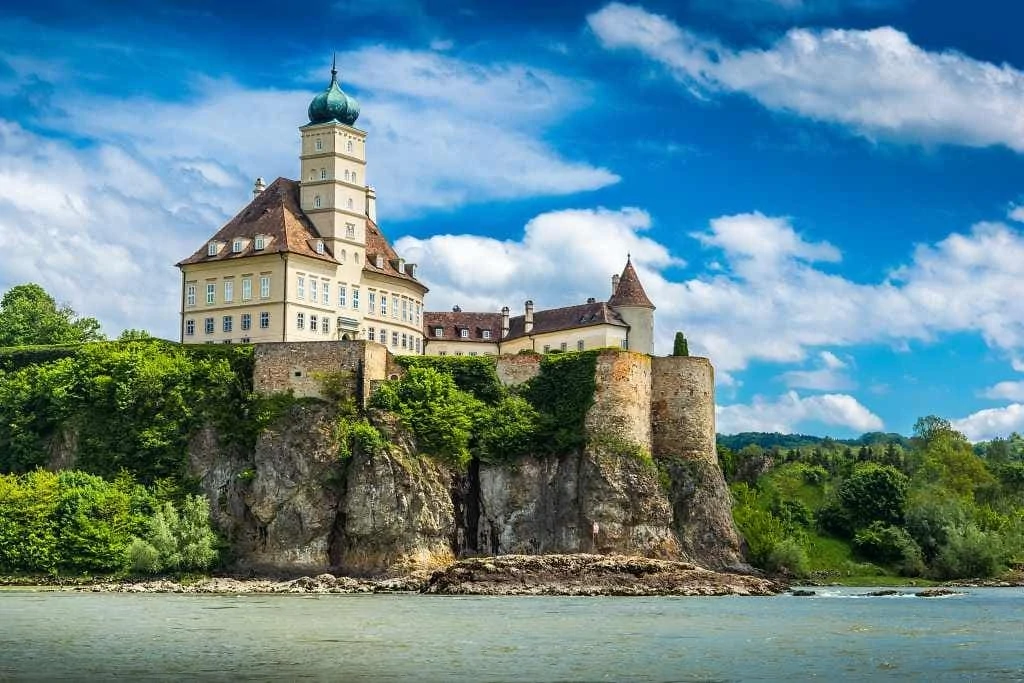
Schönbühel is a castle on a cliff overlooking the River Danube in the Austrian town of Schönbühel-Aggsbach. Built on a promontory 40 meters above the river, the castle dates from the 12th century when it was built by the knight Marchwardus de Schoenbuchele – it may have also been the site of an earlier Roman fort.
In 1396 the castle was sold to the von Starhemburg family, but by 1819 it had fallen into a state of advanced disrepair. In 1819 it was sold to Count Franz von Beroldingen, who renovated the fortification, restoring it to its former glory.
17. Rheinstein Castle
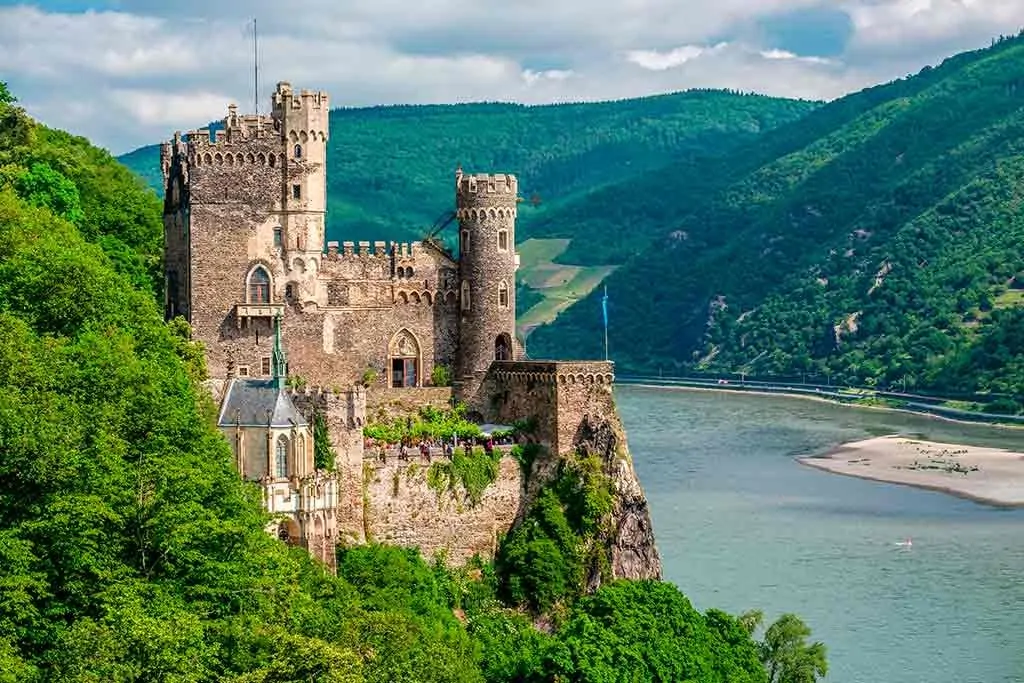
Built on a steep cliff overlooking the strategically important Rhine River in western Germany, Rheinstein Castle was originally constructed as an outpost for collecting customs by the Archbishop of Mainz.
The castle remained strategically important throughout the medieval period, as the Rhine region was relatively politically volatile, and fortifications such as Rheinstein were essential for establishing and maintaining control.
However, by the 17th century, the castle had fallen into disrepair – it was not until 1823 that Prince Friedrich Wilhelm of Prussia bought the castle and rebuilt it. Today this picturesque fortification is open to the public.
18. La Iruela Castle
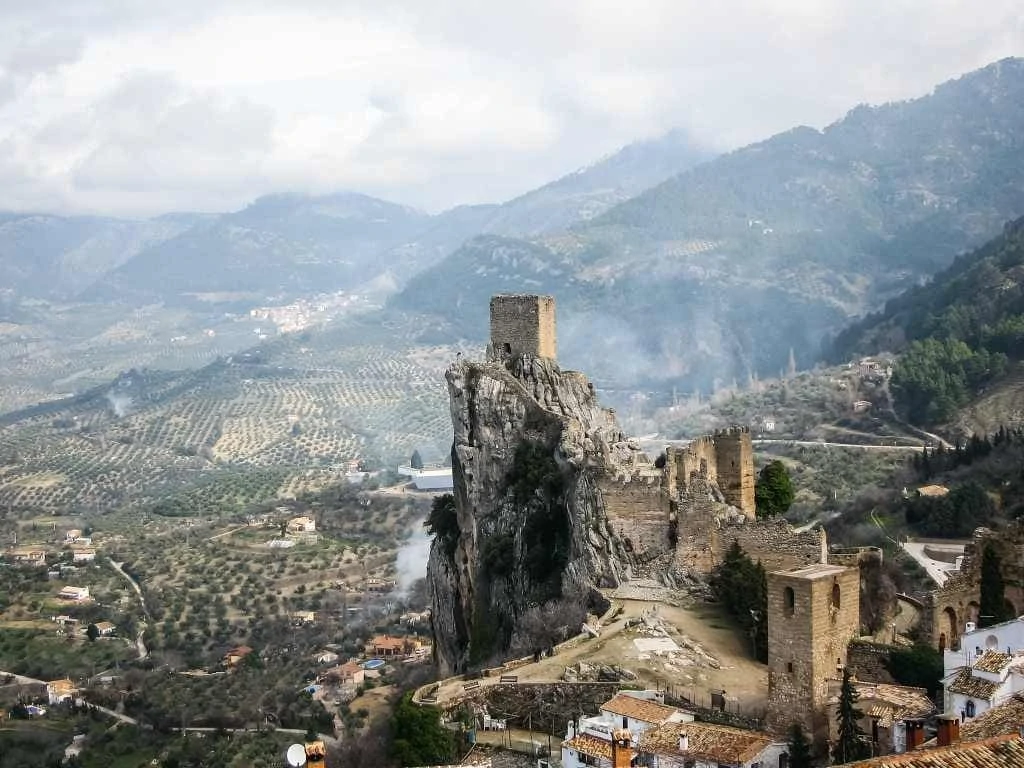
Located in the village of La Iruela, high in the Sierra de Cazorla mountain range of Andalusia, Spain, La Iruela is a castle on a cliff with incredible views of the village and valley below.
Originally built by the Moors, the castle was later used by the Knights Templar. The structure itself stands on an immensely steep and rocky outcrop that juts out from the hillside, making attack impossible except via a small land bridge that links the outcrop to the town.
FAQs about The Best Castles On A Cliff
Among the best castles on a cliff are Swallow’s Nest in the Crimean Peninsula, Dunnottar Castle in Scotland, Neuschwanstein Castle in Germany, Dunluce Castle in Northern Ireland, San Marino Castle in San Marino, Aragonese Castle in Italy and Predjama Castle in Slovenia.
Building castles on cliffs helped to increase the defensive power and made it harder for enemies to attack. Another reason for building castles on cliffs is that the castle residents saw the surroundings and possible attackers from a distance.
You find some of the best castles on cliffs in Europe. Mainly built along rivers, on cliffs above the sea, or in mountain regions, you find the best castles on cliffs and hilltops in Ireland, Great Britain, Austria, Germany, and Spain.

Hi my name is Jeff. I travel all over the world also so far I have been to 45 different countries. But Italy is my favorite having been there at 11 times. I like castles so much that I decided to build one for myself. With a working drawbridge and a moat. You can see it at Beyer Castle.com. It is my own original design and incorporates many different Castle designs from around the world that I have viewed. Let me know what you think about it!